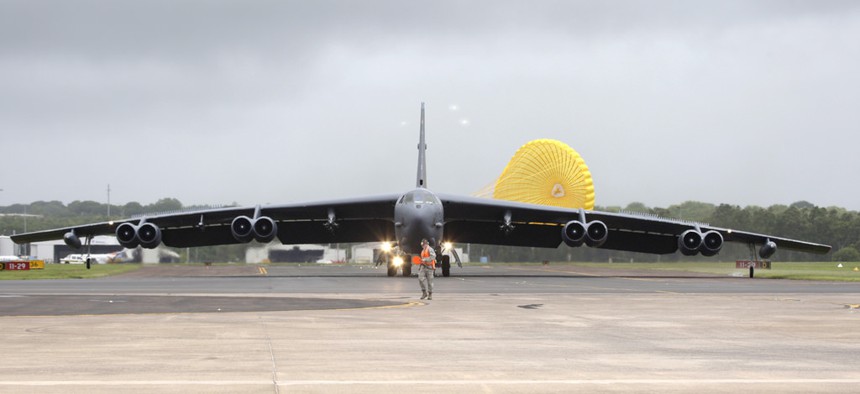
A B-52 Stratofortress lands at Royal Australian Air Force Base in Darwin, Australia on January 28, 2014. Australian Department of Defence photo
The Air Force Is Losing Patience With Its Aging Bomber Fleet
A top U.S. Air Force official is pushing to modernize America's nuclear bombers--some of which have been in the air for more than 50 years. By Global Security Newswire
An Air Force general defended plans to replace the long-range U.S. bomber fleet, amid questions on the project's necessity, the Washington Times reports.
"We need to actually have an unemotional debate about what’s going on and how we need to modernize, and how we need to protect America from its only existential threat," Maj. Gen. Garrett Harencak said in comments reported on Wednesday. Harencak, the Air Force assistant chief of staff for strategic deterrence and nuclear integration, spoke weeks after a Congressional Research Service report referenced a number of U.S. lawmakers who see the nation's aging bombers as "increasingly irrelevant."
"Bombers are as needed today as they ever were," according to Harencak, who argued for developing a new line of long-range strike bombers to replace the country's current strategic aircraft. The country's nuclear-capable bomber fleet now includes the 24-year-old B-2 bomber and the 50-year-old B-52.
"We’re told the United States Air Force will keep the B-52 flying till 2040," he said. "[Are you] willing to send your grandchildren into combat in 80-year-old airplanes and send them then to the depths of the sea in 55-year-old hulls?"
The new aircraft would offer "persistent, long-range strike capabilities that provide practical alternatives for global security, regional stability in all phases of combat operations," Harencak said.
The officer's comments suggest the Air Force is pushing to prevent any new postponement of the new bombers, according to the Times. The service hopes to deploy 100 of the systems by the middle of the next decade.
Meanwhile, the service said it plans to develop components for the next-generation aircraft using graphene, a very thin form of carbon. Air Force Global Strike Command recently finalized plans to partner with Louisiana Tech University for the initiative, according to a Wednesday press release.
NEXT STORY: Can Iraq Survive the ISIL?